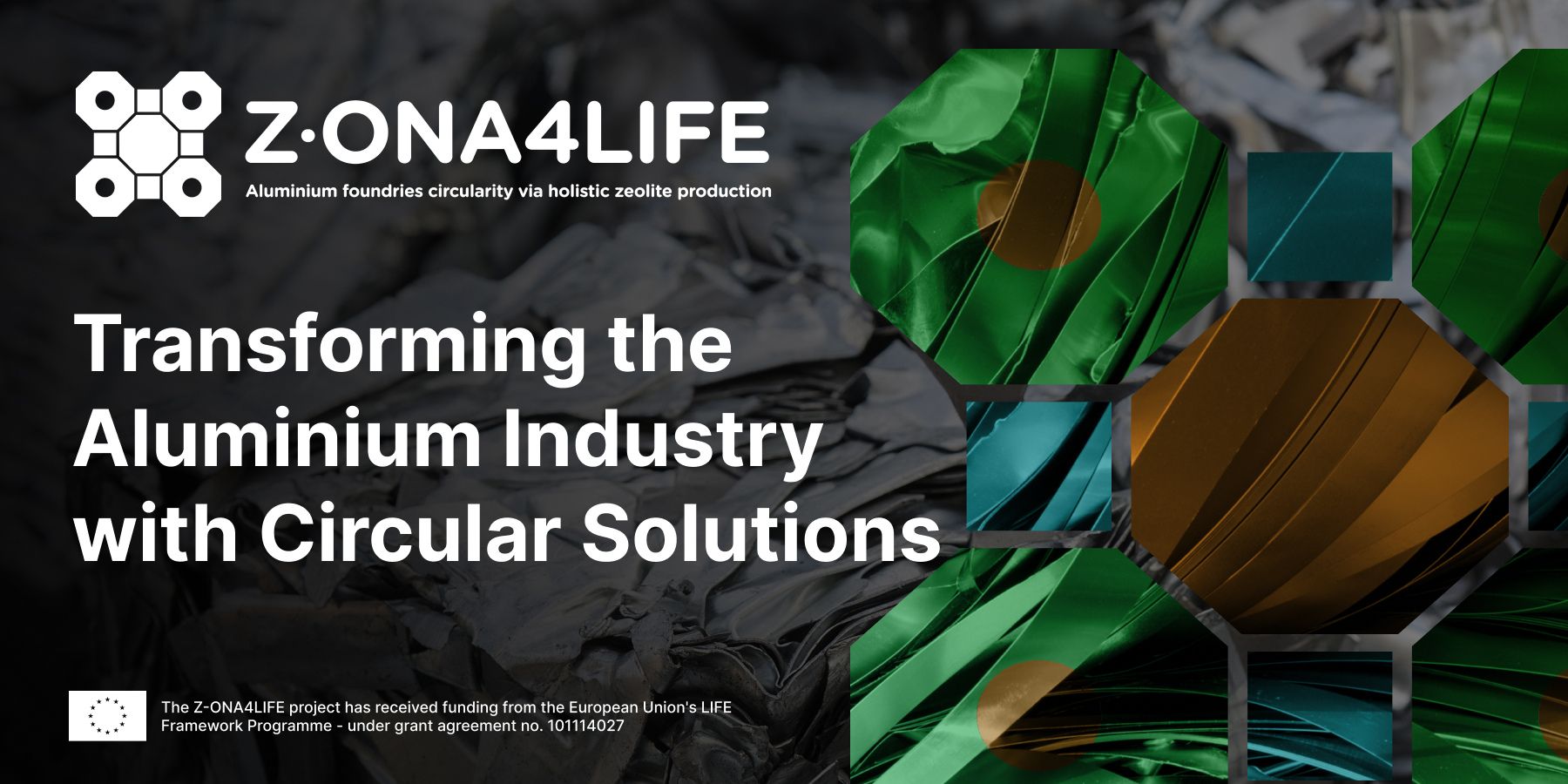
The concept of the circular economy, aimed at minimising waste, optimising resources, and fostering continuous reuse and recycling, has taken centre stage in today's global sustainability efforts.
In line with this vision, the EU-funded project Z-ONA4LIFE is set to embark on a groundbreaking journey from September 1, 2023, to August 31, 2027, ushering in a new era of circularity in the aluminium industry. By fulfilling its goals, the project contributes to strategic initiatives, including:
- the Circular Economy Action Plan: the project lays out strategies for reducing waste generation, increasing recycling, and promoting sustainable aluminium product design;
- the EU Industrial strategy: Z-ONA4LIFE emphasises the need to re-evaluate production processes and supply chains to minimize waste and resource use;
- the Waste Framework Directive: as it sets rules for waste prevention, recycling, and the circular use of resources;
- the European Green Deal: the project emphasizes resource efficiency, eco-design, and sustainable product policies;
- the Sustainable Development Goals: thanks to its innovative solutions, Z-ONA4LIFE positively impact SDGs related to circular economy principles, such as Goal 12 (Responsible Consumption and Production) and Goal 13 (Climate Action).
A strategic vision to make aluminium fully circular
The circular economy model seeks to create a regenerative and sustainable system. Z-ONA4LIFE fully embraces this vision by leveraging innovative technologies and sustainable practices to efficiently utilise and repurpose aluminium salt slag, thereby promoting circularity in the aluminium industry.
“The management of salt slag is a worldwide concern, and the aluminium industry must find a definitive solution. Z-ONA4LIFE project envisions a holistic approach to salt slag recovery. Z-ONA4LIFE aims to close the loop between waste generation, its treatment, the development of valuable materials and their future market. It is exciting to develop a process that transforms a hazardous waste like salt slag into a value-added material, Z-ONA zeolite. Then, using this zeolite to address the environmental problems associated with polluted effluents from other industrial sectors. In essence, Z-ONA4lLIFE strives to foster a symbiosis between different industrial sectors, mitigating their shared environmental impacts.” says Aurora Lopez-Delgado, Z-ONA4LIFE project coordinator.
The Z-ONA4LIFE Circular Domain
The project revolves around four pivotal stages:
- Wastes Selection: Aluminium salt slag, chosen for its global industry relevance, requires pre-treatment due to its hazardous nature and limited recovery options. Si-rich wastes also pose challenges with a lack of definitive recovery methods.
- Products, Process, and Scaling-up: Z-ONA zeolite, derived from aluminium slag, offers a promising solution without the need for complex systems. Scaling up to a pilot plant level is crucial for industrial implementation. The near zero-waste process allows for the recovery of valuable by-products.
- Circularity and Near Zero-Waste: Z-ONA zeolite will be employed in various scenarios, including gas flow cleaning, wastewater depuration from waste treatment plants, livestock slurry treatment, and mining wastewater depollution. To achieve near zerowaste, spent zeolite will be utilised to enhance composting, and gases produced will be harnessed for commercial purposes.
- Sustainability and Results Exploitation: Z-ONA4LIFE is committed to practical implementation on a marketable scale. This involves demonstrating scalable Z-ONA zeolite manufacturing on a pilot scale and implementing an effective dissemination strategy to ensure the wide replication and reliable sustainability of the project.
Advancing the Circular Aluminium Foundries Concept
The Z-ONA4LIFE project aims to achieve its goal by following five phases:
- Stage 1: Pre-treatment of aluminium salt slag and Si-rich waste involves mechanical/physical treatment and hydrolysis to recover salt (brine) and gases.
- Stage 2: The manufacture of Z-ONA zeolite at a pilot scale takes place in a closed reactor, where hydrolysed slag and silicon waste react in an alkaline medium.
- Stage 3: Brine treatment and recovery of subproducts aims to model a conceptual design for the recovery of cornerstone chemicals from brine, such as CaCl2 and Na2CO3, widely used in various chemical industries.
- Stage 4: Application of Z-ONA zeolite for effluent depuration involves exploring its use in treating effluents from a Waste Treatment Centre and depolluting gas streams and wastewaters in real scenarios.
- Stage 5: Recovery of spent zeolite for composting of organic waste is undertaken to enhance the composting process and produce soil amendments and constructed soil.
Empowering a Sustainable Aluminium Industry
Z-ONA4LIFE promises far-reaching impacts: Technical and Social: It aligns with the new Circular Economy Action Plan, encourages the sharing of best practices, and raises awareness among EU citizens about the environmental and socio-economic benefits of the Z-ONA4LIFE solution for resource recovery from industrial waste. Environmental: It enhances waste management, promotes resource reduction, reduces emissions of pollutants into the air, and safeguards soil quality. With Z-ONA4LIFE, the EU takes a bold step towards a more sustainable and circular future for the aluminium industry, setting a precedent for global environmental stewardship.